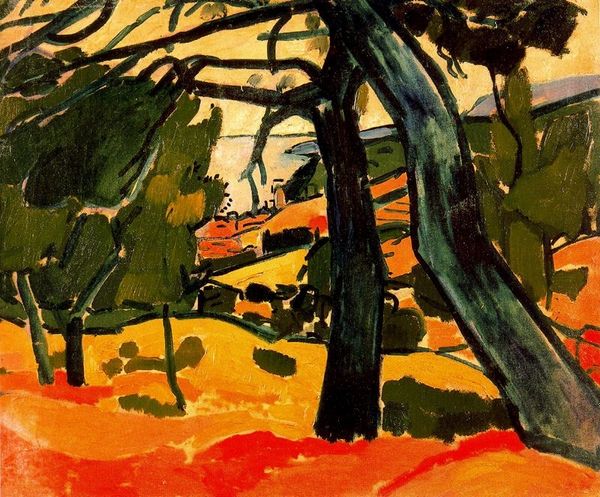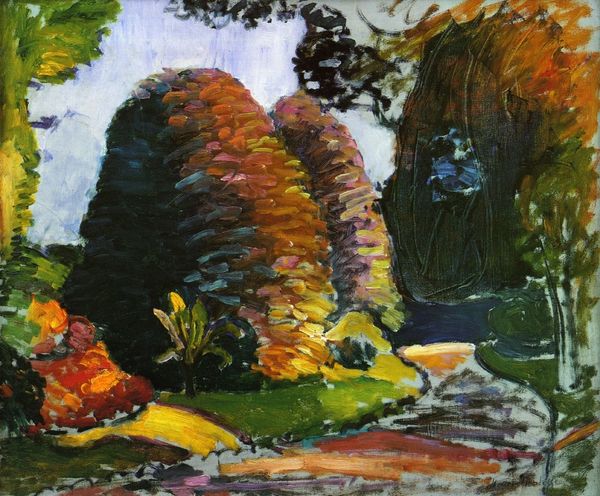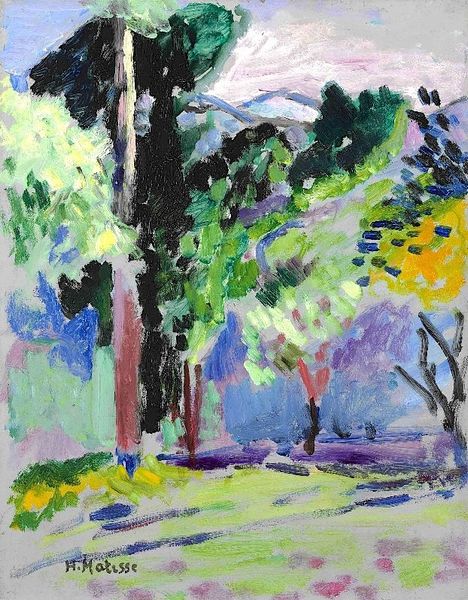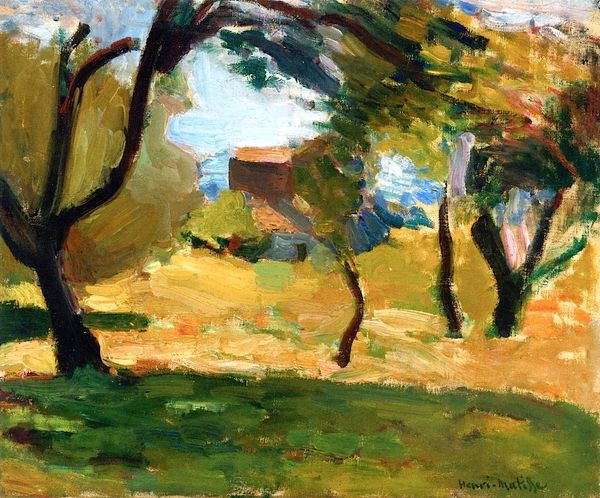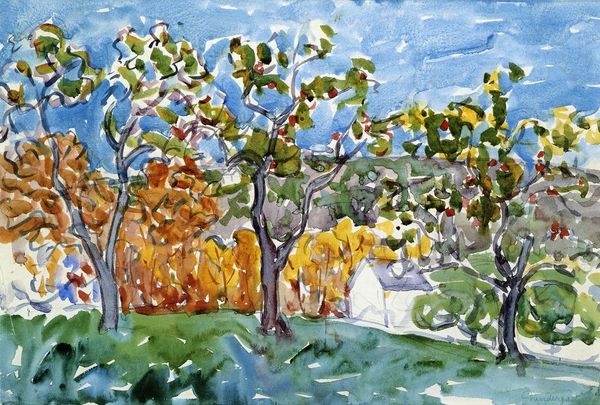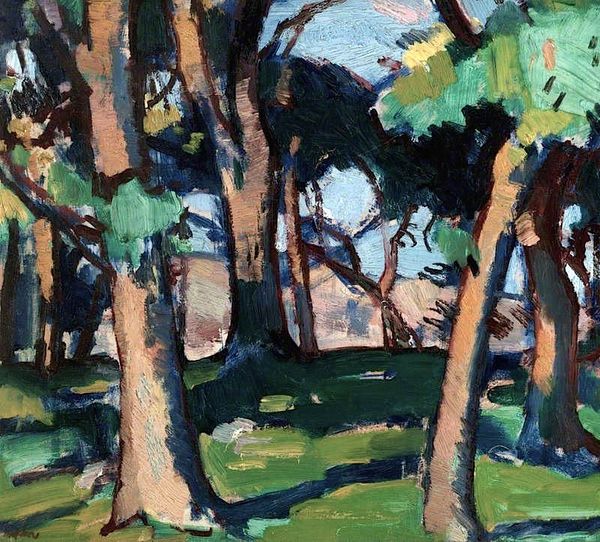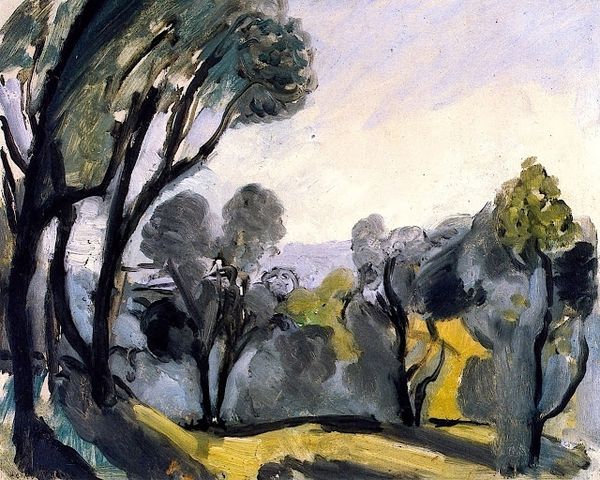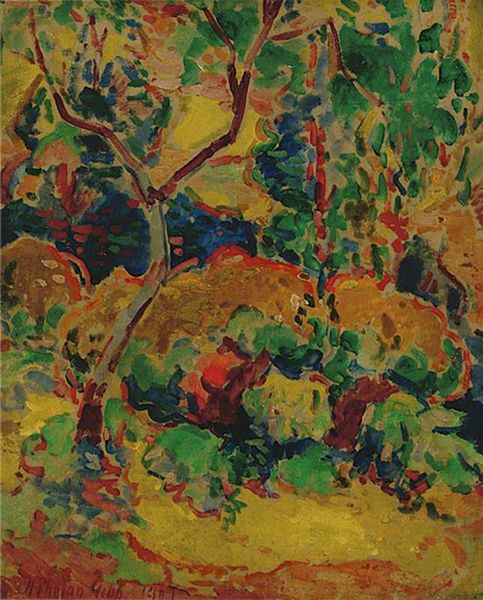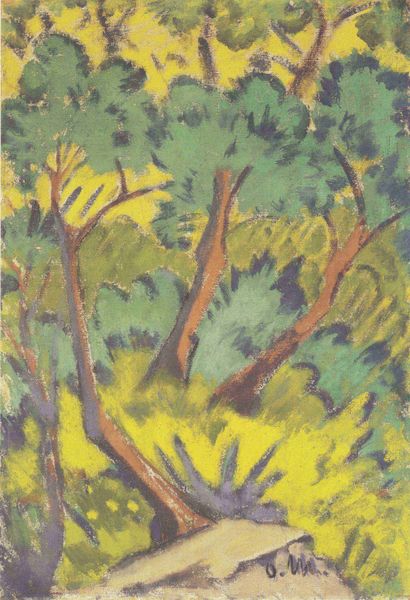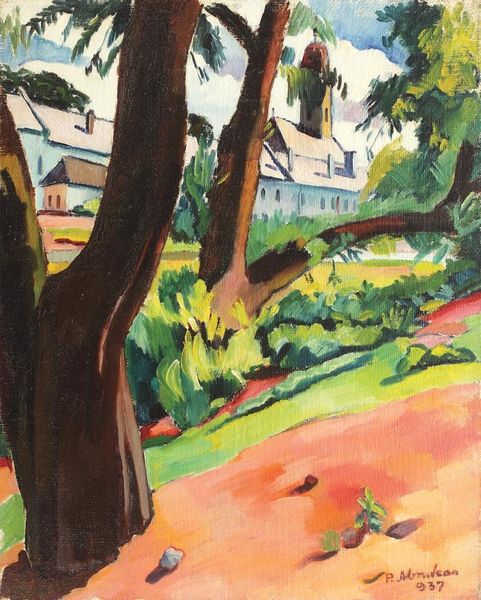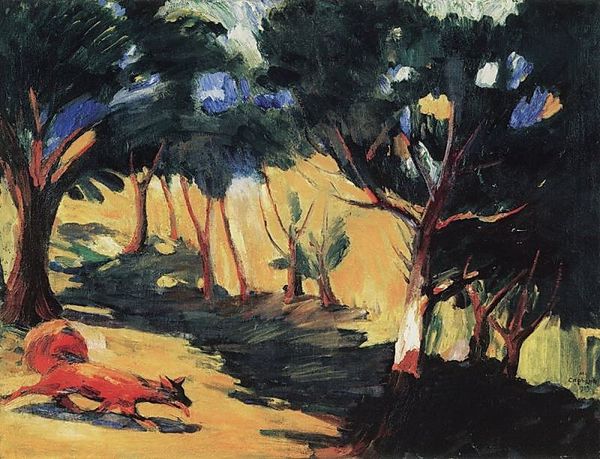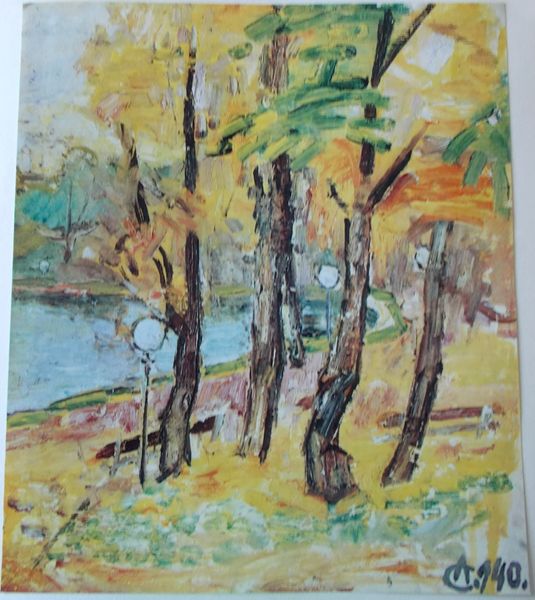
#
rayonism
Copyright: Public domain US
Curator: Goncharova's "Landscape at Ladyzhino," painted in 1908. Look at how she fearlessly lays down those brushstrokes! Editor: It’s an explosion of color! I'm struck by the texture, those thick slabs of paint. You can practically feel the wind rustling through those Fauvist trees. Curator: It's a love song to the Russian countryside, viewed through this incredible Fauvist lens, of course. Think of it: early 20th century, industry burgeoning, but Goncharova turns to the land for solace, twisting it, elevating its color. It's like she’s tasting the light! Editor: I wonder about the paint she's using. Was it commercially produced at this point? The pigment saturation is incredible, almost unbelievable when you consider how costly pure colors would have been, traditionally. This piece feels…almost profligate. What was the economic and artistic climate around this kind of artistic choice? Curator: I think that that's right to consider. You know, she didn’t flinch at all from exploring bold, intense color and raw brushwork, while still maintaining a groundedness in a distinct sense of place. There is something primal about her work, like she is painting what is deeply felt more so than merely observed. It almost gives you a shiver, don’t you think? Editor: A shiver from the cadmium and cobalt, maybe? Kidding, but that tactility is critical to understanding the visceral impact. We think of landscapes as serene, but here it's like we're looking at something actively being formed, materially. The layers upon layers reveal a working process and make us question the amount of labor and time spent. It challenges this myth of spontaneous genius often granted to this kind of art, right? Curator: Indeed. Natalia knew her artistic process well. In some ways, it seems she anticipated our current engagement with "process" and materiality by celebrating landscape as a lived practice more than as a pristine, romantic idea. Editor: It all points to how artistic choice, even when appearing deeply subjective, is often intimately connected with access to material means and technological production that we frequently disregard when enjoying artworks such as these. Curator: Makes one wonder if a painter working in Ladyzhino today would reach for a different landscape of "production." Thanks for making that clear. Editor: Pleasure, and a key reminder of what we often tend to overlook about "beauty."
Comments
No comments
Be the first to comment and join the conversation on the ultimate creative platform.
